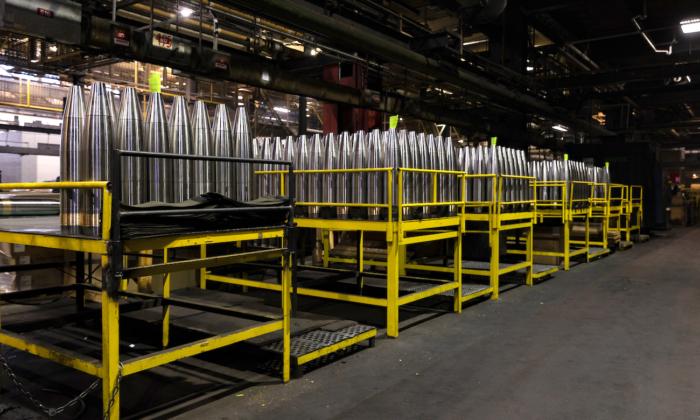The weapons stockpiles of the United States and its NATO allies are becoming “dangerously low,” with no “short-term” solutions, according to a top U.S. Air Force commander.
The air force general urged NATO allies to think seriously about their stockpiles.
“I think it’s very important that we kind of take stock of where we are in our weapons state across the 32 nations of NATO, and we’re getting way down compared to where we were,” Gen. Hecker said, while speaking on a panel with the air chiefs of the UK and Sweden at the conference, the outlet reported.
“And it’s probably not going to get better—well, it’s not in the short term—but we’ve got to make sure in the long term we have the industrial base that can increase what we have,” he said at the July 12–13 event, urging all NATO nations to start making deeper investments.
The United States is at “roughly half the number of fighter squadrons” it had compared to when it engaged in Operation Desert Storm, a U.S.-led operation that started in January 1991 as part of a response to the Iraqi invasion of Kuwait, according to the general. He noted that there has been a similar decrease in fighter squadrons for the UK.
“So we don’t have nearly what we had at the heart of the Cold War,” he said.
“Now you add that we’re giving a lot of munitions away to the Ukrainians, which I think is exactly what we need to do, but now we’re getting dangerously low and sometimes, in some cases. even too low, that we don’t have enough,” Gen. Hecker said. “And we need to get industry on board to help us out so we can get this going.”
Cluster munitions, which can be delivered by planes, artillery, or missiles, open in midair after launch and release bomblets over a wide area to strike several targets simultaneously. More than 100 countries, including two-thirds of NATO allies, have banned such weapons because they can lead to many civilian casualties.
Cluster munitions can be fired using artillery that the United States has been providing to Ukraine, and the Pentagon has a large stockpile that was facing decommissioning.

The Biden administration said the cluster munitions will enable the Ukrainians to continue their war effort with the ordnance they need, while the United States and others who supply Ukraine ramp up their production of artillery shells to further assist Ukraine’s defense.
“So as a result, this is the moment to begin the construction of that bridge so that there isn’t any period over this summer or heading into this fall when Ukraine is short on artillery and, being short on artillery, it is vulnerable to Russian counterattacks that could subjugate more Ukrainian civilians.”
Mr. Sullivan stopped short of saying there was a shortage of artillery shells.
Heidi Grant, Boeing’s director of business development who was a former top official for the Pentagon’s weapons sales, told the panel in London that in order to start production lines, industry needs a “written, on-paper request” of what’s required, Breaking Defense reported.
“It’s hard for us to make the investment unless we know that [the demand is] really there,” Ms. Grant said.





